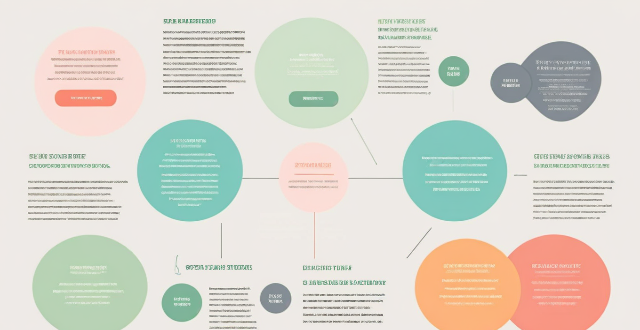Portfolio Types

How can I diversify my portfolio with bond investments ?
Diversifying your portfolio with bond investments can reduce investment risk and provide a steady stream of income. There are several types of bonds, including government, corporate, municipal, and foreign bonds, each with its own characteristics and risks. Bond mutual funds and ETFs offer automatic diversification across multiple issuers and types of bonds. When investing in bonds, consider factors such as credit quality, interest rate risk, inflation risk, and liquidity. To effectively diversify your portfolio with bonds, allocate a portion of your portfolio to bonds, invest in different types of bonds, consider bond maturities, and rebalance regularly. Consulting with a financial advisor can help determine the best bond strategies for your individual financial goals and risk tolerance.

What is the significance of rebalancing an investment portfolio ?
Rebalancing an investment portfolio is a crucial aspect of maintaining a well-diversified and risk-appropriate investment strategy. It involves periodically adjusting the asset allocation of your portfolio to align with your original investment goals and risk tolerance levels. The significance of rebalancing an investment portfolio includes maintaining diversification, controlling risk exposure, and staying disciplined. The frequency of rebalancing depends on various factors such as your investment goals, risk tolerance, and market conditions. Rebalancing an investment portfolio involves several steps, including determining your target allocation, evaluating your current allocation, selling off high-performing assets, reinvesting proceeds into underperforming assets, and reviewing and adjusting your portfolio regularly.

How do I create a diversified portfolio in the stock market ?
Creating a diversified portfolio is an essential strategy for mitigating risk and maximizing returns in the stock market. Here are some steps to help you create a diversified portfolio: 1. Determine your investment goals, including factors such as your risk tolerance, investment horizon, and financial objectives. 2. Allocate assets across different asset classes, such as stocks, bonds, cash, and other securities. 3. Select securities within each asset class that align with your investment goals and are not highly correlated with each other. 4. Rebalance your portfolio regularly to maintain your desired asset allocation. 5. Monitor the performance of your portfolio and make adjustments if necessary. By following these steps, you can create a well-diversified portfolio that aligns with your investment goals and helps you achieve long-term financial success.

How do I diversify my cryptocurrency portfolio ?
Diversifying a cryptocurrency portfolio involves understanding the importance of spreading risk, setting clear investment goals, researching different cryptocurrencies, allocating based on risk tolerance, considering dollar-cost averaging, staying updated with market trends, rebalancing periodically, using a reliable crypto exchange, prioritizing security, and seeking professional advice when needed. This strategy helps to mitigate the impact of volatility and potentially maximize returns over the long term.

How does gold investment work ?
Gold investment is a popular way to diversify your portfolio and hedge against inflation, offering various forms such as physical gold, ETFs, mutual funds, mining company stocks, futures, and options. It provides benefits like hedging against inflation, portfolio diversification, and acting as a safe haven during crises but also involves risks including price volatility and storage costs. To start investing in gold, one should educate themselves, determine their investment goals, choose the right type of investment, allocate a budget, research vendors/brokers, and monitor their investment.

How do I get started with bond investing ?
Bond investing is a popular way to diversify your portfolio and earn a steady income. Here are some steps to help you get started: 1. Understand the basics of bonds. 2. Determine your investment objectives. 3. Choose the right type of bond for you. 4. Consider the duration of the bond. 5. Research and select brokers or intermediaries. 6. Diversify your portfolio by investing in various types of bonds issued by different entities. 7. Monitor your investments regularly and adjust your portfolio as needed based on changing market conditions or personal circumstances.

How can I diversify my portfolio with different financial products ?
Diversifying your portfolio with different financial products is crucial for managing risk. Here's a summary of the key strategies: 1. **Stocks**: Invest in different industries, company sizes, and both growth and value stocks. 2. **Bonds**: Purchase bonds with varying maturities, including corporate, government, and municipal bonds. Consider bond funds or ETFs for broader exposure. 3. **Mutual Funds and ETFs**: Invest in funds focusing on different asset classes, geographical regions, or sectors like technology or healthcare. 4. **Real Estate**: Include options like direct ownership, REITs, or real estate syndications for potential rental income and as a hedge against inflation. 5. **Commodities and Precious Metals**: Add physical commodities, futures, options, or commodity-focused ETFs to serve as a store of value during inflationary periods. 6. **Alternative Investments**: Allocate a portion of your portfolio to assets like private equity, hedge funds, or collectibles for unique opportunities outside traditional markets. 7. **International Exposure**: Expand beyond domestic markets through foreign stock markets, international mutual funds or ETFs, and emerging market investments. Diversification requires a thoughtful approach to balancing risk and reward across various asset classes and markets, considering investment goals, risk tolerance, and time horizon.

What are the different types of fire extinguishers ?
This text provides a comprehensive guide to the various types of fire extinguishers available, each designed for specific classes of fire. It includes detailed descriptions and pros & cons of water, foam, carbon dioxide (CO2), dry chemical, wet chemical, pre-action wet chemical, and clean agent fire extinguishers, emphasizing their suitability for different types of fires such as class A, B, C, and K. The text concludes by highlighting the importance of choosing the right type of extinguisher based on potential fire hazards in one's environment.

How can women build a diversified portfolio to minimize risks and maximize returns ?
The article provides a comprehensive guide on how women can build a diversified portfolio to minimize risks and maximize returns in the stock market. It emphasizes the importance of education, starting early, setting clear goals, diversifying investments across different asset classes, industries, and geographic regions, rebalancing regularly, and considering professional advice when needed. By following these tips, women can create a strong foundation for long-term financial success.

What are the different types of preschool programs available ?
Preschool programs are designed to prepare young children for kindergarten and beyond. There are several types of preschool programs available, each with its own unique approach and focus. The most common types of preschool programs include Montessori, Waldorf, Reggio Emilia, High Scope, Play-Based, Head Start, and Co-op/Parent Participation. Each program has its own key features and benefits. When choosing a preschool program for your child, it's essential to consider your family's needs, values, and preferences to find the best fit for your little one's early education journey.

Can you explain the different types of PPE and their uses ?
Personal Protective Equipment (PPE) is a type of equipment worn to minimize the risk of injury or illness in the workplace. It can be categorized into different types based on the level of protection they offer and the specific hazards they are designed to protect against. Here are some common types of PPE and their uses: - Head Protection: Hard Hats, Safety Goggles, Face Shields - Respiratory Protection: Dust Masks, Respirators - Hand Protection: Gloves, Mittens - Foot Protection: Safety Shoes, Boots - Body Protection: Aprons, Coveralls, High-Visibility Clothing - Hearing Protection: Earplugs, Earmuffs

What role does real estate play in a retirement portfolio ?
The text discusses the role of real estate in a retirement portfolio, highlighting its potential benefits such as income generation through rental income and appreciation, serving as an inflation hedge by maintaining its value during inflationary periods and allowing rent adjustments, and providing diversification by being a non-correlated asset class and an alternative investment. It also outlines risks associated with real estate investments, including liquidity risk due to the illiquid nature of properties, market risk due to fluctuating property values influenced by local market conditions, and management responsibilities that come with owning rental property. The conclusion emphasizes the importance of considering these advantages and risks when incorporating real estate into a retirement strategy, along with the need for proper planning and consideration of personal circumstances.

How can investors ensure that their portfolios align with global climate goals ?
Investing in alignment with global climate goals is crucial for a sustainable future. Investors can ensure their portfolios reflect these objectives by understanding the Paris Agreement's goals, assessing current portfolio alignment, shifting investment strategies towards sustainable and impact investing while divesting from high-risk sectors, engaging with companies on sustainability issues, regularly monitoring and reporting on portfolio alignment, collaborating with other investors, and staying informed through continuous learning. This approach helps support a transition to a low-carbon economy while achieving competitive financial returns.

Are hub motors more expensive than other types of motors ?
Hub motors are generally more expensive than other types of motors, such as brushed DC motors and induction motors. However, they offer several advantages over these motor types, including their compact size, high efficiency, and low maintenance requirements. Brushless DC motors are generally less expensive than hub motors but still offer many of the same benefits. The choice between these motor types will depend on the specific needs and budget of the vehicle manufacturer or end-user.

How does gold investment compare to other types of investments ?
This article compares gold investment with other types of investments, such as stocks, bonds, real estate, commodities (other than gold), and cryptocurrencies. It highlights the advantages and disadvantages of each type of investment, emphasizing that the choice of where to invest depends on individual goals, risk tolerance, and market conditions. The article also suggests conducting thorough research and seeking professional advice before making any investment decisions.

What kind of seasonings work well with different types of fish ?
This text provides a comprehensive guide to seasonings for various types of fish and shellfish, categorized by freshwater and saltwater species. It offers specific seasoning suggestions for each type of fish or shellfish, such as salmon, trout, catfish, tuna, mahi-mahi, sardines, anchovies, shrimp, lobster, crab, clams, mussels, and oysters. The suggested seasonings aim to enhance the natural flavors of the seafood while adding depth and complexity to the dishes.

How can I protect my growing wealth from market fluctuations ?
Market fluctuations are a natural part of any investment journey. However, as your wealth grows, it becomes increasingly important to implement strategies that can help protect your assets from the ups and downs of the market. Here's how you can do it: - Diversify Your Portfolio - Use Hedging Strategies - Stay Updated on Economic Indicators - Regularly Review and Rebalance Your Portfolio - Work with Financial Advisors

Can you provide examples of different types of ecosystem services ?
The text provides a detailed summary of the four main types of ecosystem services, namely supporting, regulating, provisioning, and cultural services. Supporting services form the foundation for all other services and include nutrient cycling, soil formation, and primary production. Regulating services control ecological processes such as climate regulation, disease regulation, and water purification. Provisioning services provide direct material benefits to humans, including food, freshwater, timber, and medicine. Cultural services encompass non-material benefits that contribute to human well-being, such as recreation, spiritual enrichment, and educational opportunities. The text emphasizes the importance of understanding these different types of ecosystem services to appreciate the value of nature and the significance of conservation efforts.

Should governments prioritize environmental subsidy policies over other types of subsidies ?
The text discusses the pros and cons of prioritizing environmental subsidy policies over other types of subsidies, such as healthcare or education. The author argues that while environmental subsidies can help promote sustainable practices and reduce the negative impacts of human activities on the planet, other types of subsidies are also crucial for the well-being of society. The author suggests a balanced approach that considers both environmental sustainability and social welfare, including integrated policy making, targeted subsidies, public-private partnerships, and continuous evaluation.

What are some common types of emergencies and how should they be handled ?
Emergencies can occur at any time and place, often without warning. Knowing the types of emergencies and how to handle them is crucial for ensuring safety and minimizing harm. In this article, we will discuss some common types of emergencies and their appropriate handling methods. ## Natural Disasters Natural disasters are events caused by environmental factors that result in widespread damage and loss of life. Some common types of natural disasters include earthquakes, hurricanes, floods, wildfires, and tornadoes. When faced with a natural disaster, it is essential to stay calm, seek shelter, follow evacuation orders, have an emergency kit ready, and stay informed about the situation. ## Medical Emergencies Medical emergencies refer to situations where immediate medical attention is required to prevent serious harm or death. Some common types of medical emergencies include heart attacks, strokes, severe allergic reactions, severe bleeding, and choking. When dealing with a medical emergency, it is crucial to call for help, perform first aid if trained, use automated external defibrillators (AEDs) if available, do not move the victim unless necessary, and stay with the victim until help arrives. ## Fire Emergencies Fire emergencies involve uncontrolled fires that pose a threat to people and property. Some common types of fire emergencies include house fires, wildfires, car accidents involving fire, and industrial fires. When facing a fire emergency, it is important to activate fire alarms/alert others, evacuate safely through designated exits, call emergency services immediately, do not reenter burning buildings, and use fire extinguishers appropriately if trained and safe to do so. In conclusion, being prepared for emergencies is crucial for ensuring safety and minimizing harm. By understanding common types of emergencies and their appropriate handling methods, individuals can respond effectively in crisis situations. Remember to stay calm, act quickly, and follow proper procedures to protect yourself and others.

What is the current market share of CHEVs compared to other types of green vehicles ?
The market share of CHEVs compared to other types of green vehicles can be broken down into several categories, including hybrid electric vehicles (HEVs), plug-in hybrid electric vehicles (PHEVs), and battery electric vehicles (BEVs). HEVs are one of the most popular types of green vehicles on the market today, accounting for approximately 2.5 million units sold worldwide in 2020. PHEVs are similar to HEVs but have a larger battery pack that can be charged from an external power source, with global sales reaching around 1.3 million units in 2020. BEVs are fully electric vehicles that rely solely on batteries for power, with global sales reaching over 3 million units in 2020. When comparing CHEVs to other types of green vehicles, it is important to note that CHEVs fall under the category of HEVs. Therefore, the actual market share of CHEVs compared to other types of green vehicles would likely be much smaller than 2.5 million units sold worldwide in 2020.

What is the role of asset allocation in an investment strategy ?
Asset allocation is a crucial component of any investment strategy, involving dividing your portfolio among different asset classes based on your financial goals, risk tolerance, and investment horizon. It plays a vital role in determining the overall performance of your portfolio by helping you manage risk and maximize returns through diversification. To determine your asset allocation, consider your financial goals, risk tolerance, investment horizon, and consult with a financial advisor. Review and adjust your asset allocation regularly as your circumstances change and new opportunities arise.

How do celebrity mansions compare to other types of luxury real estate, such as penthouse apartments or beachfront properties ?
Celebrity mansions are often compared to other types of luxury real estate, such as penthouse apartments or beachfront properties. While all these properties share some common features, there are also significant differences between them. In this article, we will explore the similarities and differences between celebrity mansions and other types of luxury real estate.

What are the different types of radiation and how do they differ in terms of risk ?
This text discusses two main types of radiation: ionizing and non-ionizing, detailing their characteristics, examples, and potential risks. Ionizing radiation, which includes alpha particles, beta particles, gamma rays, X-rays, and neutrons, can damage living tissue and DNA, leading to cancer and other health issues. Non-ionizing radiation, such as ultraviolet light, visible light, microwaves, radio waves, and extremely low-frequency radiation (ELF), generally poses lower risks but can still cause harm with high levels of exposure. The text emphasizes the importance of managing exposure to both types of radiation to mitigate potential risks.

What are the different types of scholarships available ?
Scholarships are financial aid awards that help students cover the costs of college or university education. They come in various forms, each targeting different groups of students based on merit, need, athletic ability, artistic talent, diversity, subject matter, leadership skills, community service, corporate affiliation, local organization membership, religious background, international study goals, and specific career training. Examples include the National Merit Scholarship for academic achievement, Federal Pell Grants for financial need, NCAA athletic scholarships for sports prowess, the Presidential Scholarship in the Arts for artistic talent, the Hispanic Scholarship Fund for diversity, Health Professions Scholarship Program for subject-specific majors, Jack Kent Cooke Foundation Scholarships for leadership and community service, Coca-Cola Scholars Program for corporate relations, Kiwanis Club scholarships for local community members, Catholic Education Foundation Scholarships for religious affiliation, Fulbright Program for international studies, and Nurse Corps Scholarship Program for career-specific training.

What are the best financial products for long-term investment ?
The text provides a comprehensive overview of the various financial products available for long-term investment. It explains the definition, benefits, and risks of each option including stocks, bonds, mutual funds, ETFs, and REITs. The text emphasizes the importance of considering one's investment goals, risk tolerance, and financial situation before choosing which products to include in a portfolio. Overall, the text serves as a useful guide for individuals looking to make informed decisions about their long-term investments.

Can you explain the differences between an internal and external rotor motor ?
Motors are crucial components of various mechanical systems, and understanding their types is essential for selecting the appropriate one for a specific application. Two common types of motors are internal rotor motors and external rotor motors. An internal rotor motor has its rotor located inside the stator, while an external rotor motor has its rotor located outside the stator. The main differences between these two types of motors include rotor location, torque output, cooling efficiency, maintenance accessibility, and application suitability. Understanding these differences can help in selecting the appropriate motor type for a given task.

What are some common misconceptions about radiation and how can we address them ?
The text discusses common misconceptions about radiation and offers ways to address them. It clarifies that not all types of radiation are harmful, with ionizing radiation being potentially damaging to cells' DNA and non-ionizing radiation generally considered safe at low levels. The text also explains that while some forms of radiation can increase the risk of cancer, not all types lead to cancer development. Additionally, it points out that radiation exposure can be acute or chronic, and its effects may not be immediately apparent. Finally, the text emphasizes that the danger associated with radiation depends on several factors, including the type of radiation, the amount of exposure, and the duration of exposure.

What is the risk involved in investing in bonds ?
Investing in bonds carries risks such as interest rate, credit, inflation, liquidity, reinvestment, call, prepayment, foreign currency, and political/regulatory changes. Understanding and managing these risks is crucial for protecting your investment. Diversifying your portfolio across different types of bonds and monitoring market conditions can help mitigate these risks.